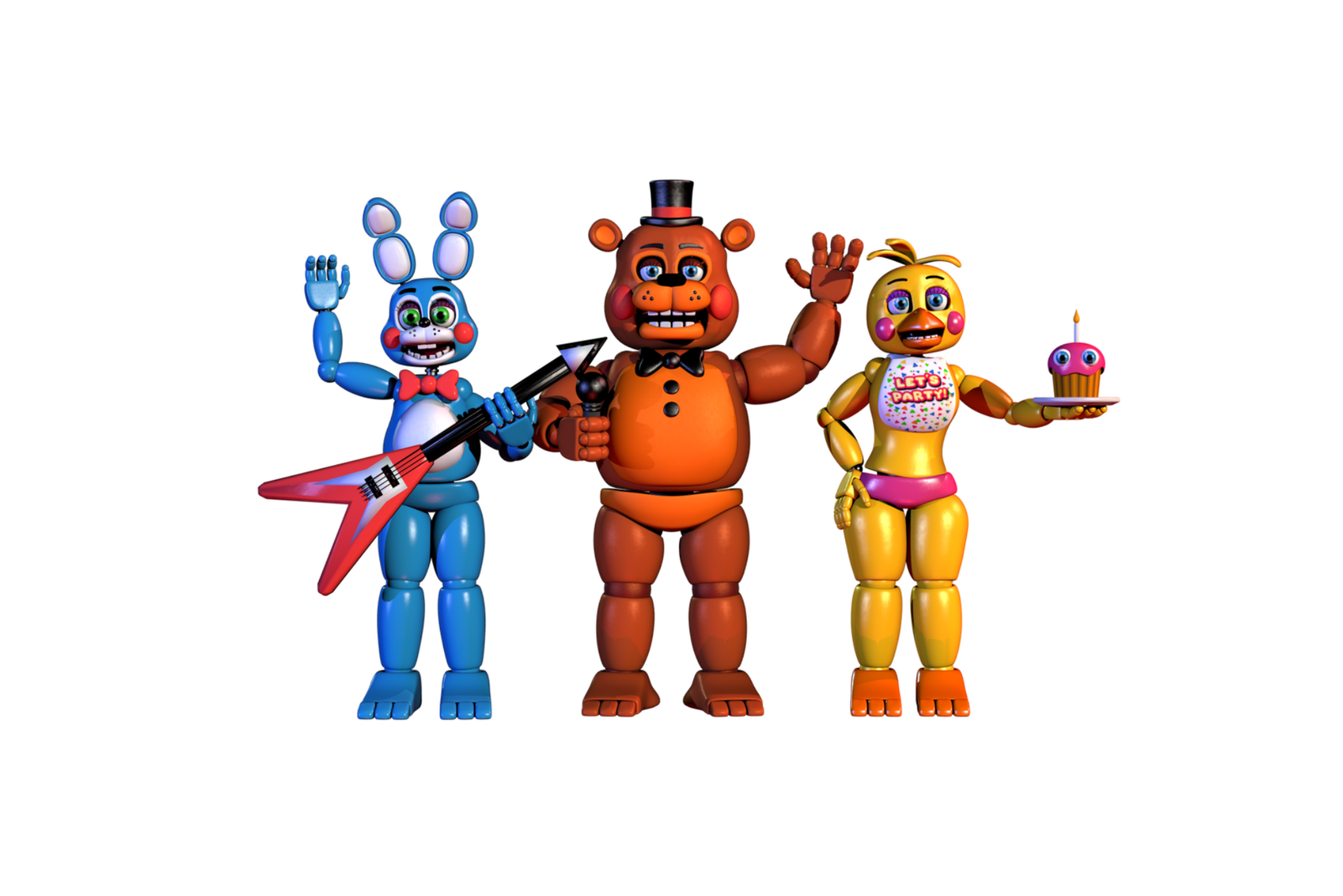Introduction
The phrase “Did toy animatronics have kids in them” has stirred curiosity and fear among fans of the Five Nights at Freddy’s (FNaF) franchise. For beginners exploring this chilling universe, the question might sound bizarre or even horrifying. Yet, it holds an important place in understanding the dark, mysterious lore behind the beloved yet terrifying world of animatronic characters. In this detailed article, we’ll dive into the myth, the truth, and practical tips for beginners who want to explore FNaF lore safely and intelligently. This complete did toy animatronics have kids in them guide will clear confusion, separate fact from fiction, and help newcomers enjoy the story with a more informed perspective.
Understanding the Origin of Toy Animatronics
Toy animatronics first appeared in Five Nights at Freddy’s 2, the second installment in Scott Cawthon’s legendary horror series. These characters were designed as newer, friendlier versions of the original animatronics from the first game. Bright colors, smooth plastic faces, and cheerful voices made them look more approachable for children. However, under their cute exteriors lay a disturbing mystery.
The FNaF series often plays with the idea of “haunted animatronics.” Fans believe that the spirits of murdered children were trapped inside the original robots, giving them a sinister consciousness. Naturally, when new toy versions appeared, many fans began asking: Did toy animatronics have kids in them too?
Did Toy Animatronics Actually Have Kids Inside Them?
Here’s where it gets interesting. According to official FNaF lore, the toy animatronics were not directly possessed by the souls of children. Instead, they were controlled through a facial recognition system connected to a criminal database. When this system malfunctioned, the toy animatronics began attacking night guards, mistaking them for dangerous individuals.
So, while the toy animatronics didn’t physically have children inside them, they were still linked to the broader horror surrounding missing kids and haunted machinery. In the deeper lore, the spirits of those children continued to influence events, especially through the Puppet (also known as the Marionette), which played a crucial role in giving life—or unlife—to other animatronics.
The Role of the Puppet in the FNaF Lore
The Puppet is often seen as the original spirit-bringer in FNaF’s dark timeline. After the tragic incident where multiple children were killed, their souls needed vessels. The Puppet, driven by a sense of justice, gave those souls new homes inside the old animatronics. The toy versions, however, were technological replacements and not spiritual ones.
That means while the toy animatronics were not directly possessed, they were indirectly part of the haunting due to the Puppet’s lingering influence. Many fans see them as a bridge between the original possessed animatronics and the later, more advanced models like the Funtime series.
Why Fans Believed Toy Animatronics Contained Children
Several clues in FNaF 2 led players to believe the toy animatronics were haunted. Their erratic behavior, creepy laughter, and sudden attacks made them feel alive. Some theories suggested that leftover spiritual energy or corrupted programming caused this behavior.
Another reason for the confusion was the presence of “Toy Golden Freddy,” a mysterious character who appeared ghost-like, hinting at a connection with the dead children’s souls. The game’s ambiguous storytelling encouraged fans to fill in the gaps, creating a fan-driven mystery that blurred the line between machines and spirits.
Practical Tips for Beginners Exploring the Lore
If you’re new to the Five Nights at Freddy’s universe, understanding its lore can be overwhelming. Here are some beginner-friendly tips to help you make sense of it all while keeping your experience fun and safe.
Start With the Core Games
Begin with FNaF 1, FNaF 2, and FNaF 3. These three titles lay the foundation for the story. Pay attention to audio clues, newspaper snippets, and phone calls—they hide important backstory elements.
Keep Notes While Playing
The FNaF story is fragmented. Writing down observations or taking screenshots of key moments helps you connect dots later. Many dedicated fans maintain timelines or charts to track character evolution.
Don’t Rely on One Theory
There are hundreds of fan theories about who possesses which animatronic or the true timeline of events. Approach each theory with curiosity, but cross-check it with in-game evidence and official sources.
Watch Lore Videos and Read Summaries
If the games feel too cryptic, you can always turn to reliable YouTubers and blogs that break down the FNaF timeline in digestible chunks. This can help beginners avoid confusion and false assumptions.
Visit Trusted Resources
Websites like Open Knowledge and Aerial Loop’s blog insights section often feature well-researched explanations of complex topics like FNaF. For a deeper dive, you can read the complete did toy animatronics have kids in them guide for more detailed analysis.
The Psychology Behind the Myth
Part of what makes Five Nights at Freddy’s so enduring is how it plays with human fears. The idea of inanimate objects containing life—or death—is both fascinating and terrifying. This fear taps into the “uncanny valley” effect, where something almost human feels unsettling.
Toy animatronics, with their large eyes and childish designs, appear innocent. But when they move unnaturally or act hostile, it creates a shocking contrast that amplifies fear. The myth of kids inside these animatronics adds emotional depth—turning them from simple robots into tragic, haunted beings.
The Creator’s Perspective
Scott Cawthon, the creator of Five Nights at Freddy’s, has stated in interviews that much of the game’s lore is intentionally vague. He designed it so that fans could interpret and theorize endlessly. The toy animatronics being haunted was never confirmed outright, allowing players to imagine possibilities that deepen their emotional connection to the story.
This storytelling method encourages exploration and discussion—two pillars of why FNaF remains so relevant years after its debut. For beginners, this means there’s no single “correct” answer. The real joy lies in uncovering pieces of the puzzle yourself.
How to Enjoy FNaF Safely
Because of its dark themes, beginners—especially younger fans—should approach FNaF responsibly.
Take Breaks During Gameplay
Jump scares and intense sounds can cause anxiety. Play in well-lit areas and take breaks between nights to reduce tension.
Avoid Late-Night Play If You’re New
The game’s atmosphere is much scarier in darkness. Starting during daytime sessions helps you get used to the pacing before exploring nighttime sessions.
Don’t Confuse Fiction with Reality
Remember that no real toy animatronics contain children or spirits. The FNaF world is fictional. The horror exists to entertain, not to depict real-life events.
Engage with the Community
Online fan forums, Reddit threads, and FNaF Wiki pages are excellent places to discuss theories respectfully. Just remember that everyone interprets the story differently, so keep an open mind.
The Moral Lessons Hidden in the Story
Despite its horror elements, Five Nights at Freddy’s carries meaningful themes. It explores consequences of wrongdoing, innocence lost, and redemption. The haunting of the animatronics isn’t just for fear—it’s symbolic of guilt, justice, and the lingering effects of tragedy.
The myth of toy animatronics having kids in them can be seen as a metaphor for memory and trauma. The “spirits” reflect how past mistakes continue to influence the present, even when people try to rebuild or modernize. Understanding this emotional layer makes the story richer and more impactful.
So, did toy animatronics have kids in them? The short answer is no, but the truth is more complex. While they weren’t literally possessed, they carried the emotional and narrative echoes of haunted creations. Their unsettling behavior, design, and connection to the larger tragedy of FNaF make them unforgettable.
For beginners, understanding this lore opens the door to appreciating the rich layers of storytelling in Five Nights at Freddy’s. Dive deeper into the theories, analyze clues, and remember to enjoy the thrill responsibly.
If you’re ready to explore the full mystery, check out the complete did toy animatronics have kids in them guide and other fascinating blog insights for more analysis and discussions. For broader educational perspectives on creative storytelling, visit Open Knowledge and expand your understanding of how games like FNaF blend fear, lore, and imagination.
Frequently Asked Questions
Were toy animatronics possessed by children?
No. The toy animatronics were controlled by advanced AI systems, not directly possessed by souls. However, they were still influenced by haunted elements in the storyline.
Which animatronics were actually possessed?
The original Freddy, Bonnie, Chica, Foxy, and Golden Freddy were believed to house the souls of murdered children, not their toy counterparts.
What is the difference between toy animatronics and the original ones?
Toy animatronics are redesigned, more modern versions equipped with security technology. The originals were simpler, older, and tied to supernatural events.
Is the FNaF story based on real events?
No, it’s entirely fictional. While inspired by general fears around technology and childhood safety, the events and characters are products of storytelling.
Where can beginners learn more about FNaF lore?
You can explore detailed guides and blog insights from gaming websites or visit Open Knowledge for educational breakdowns of cultural storytelling and digital folklore.









